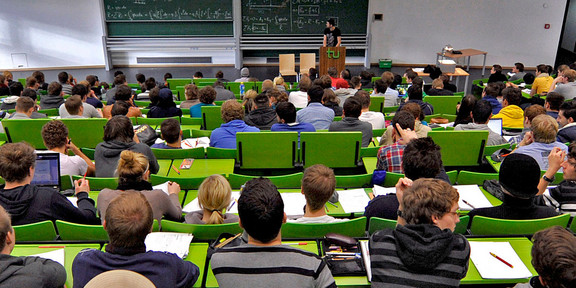Innovative instrumentation in time-domain THz spectroscopy
- Kolloquium

Scientific instruments are often built for the main purpose of testing a theory. However, many of the world’s greatest discoveries were made with instruments built only to satisfy a researcher’s curiosity or to explore uncharted territories. One famous example is the laser: a device now used for many applications, but originally described by his inventor as a “solution seeking for a problem”. The laser and other well-known photonics instruments, such as the microscope and telescope, have clearly demonstrated that progress in research instrumentation contributes to high-impact discoveries.
Motivated by these accounts of technological developments in the field of optics leading to scientific breakthroughs, my research group has been focusing on improving state-of-the-art photonics instruments, notably as a mean to investigate new condensed matter systems. More specifically, we are interested in designing and demonstrating high-performance terahertz (THz) devices. THz is an active field of research and development focusing on photonics technology operating around 1 THz in optical frequency, which corresponds to wavelengths around 300 µm. The THz electromagnetic radiation, located between the near- infrared and microwave regions, is generated and detected with relatively complex experimental schemes, but it also possesses unique properties enabling new possibilities for material characterization. For example, THz can be used to image through seemingly opaque materials, identify molecular compounds from their low-energy vibrational resonances, and monitor quasi-particle populations in condensed matter systems. More importantly, THz spectroscopy can be used to trace ultrafast dynamics and resolve the complex interplay of microscopic interactions. However, many of these applications are currently limited by a lack of efficient and affordable THz systems. In this presentation, I will show my group’s recent progress on improving THz time-domain spectroscopy (THz-TDS) systems, notably by relying on innovative ideas borrowed from the fields of nonlinear optical propagation in photonic crystal fibers and nanopatterned semiconductor crystals [1-4].
[1] W. Cui, K. M. Awan, R. Huber, K. Dolgaleva, J.-M. Ménard. Broadband and high-sensitivity time-resolvedTHz system using grating-assisted tilted-pulse-front phase matching. Advanced Optical Materials 2101136 (2021)
[2] A. Halpin, W. Cui, K. M. Awan, K. Dolgaleva, J.-M. Ménard. Enhanced terahertz detection efficiency via grating-assisted noncollinear electro-optic sampling. Physical Review Applied 12, 031003 (2019)
[3] W. Cui, A. Schiff-Kearn, E. Zhang, N. Couture, F. Tani, D. Novoa, P. St.J. Russell, J-M. Ménard. Broadband and tunable time-resolved THz system using argon-filled hollow-core photonic crystal fiber. APL Photonics 3, 111301 (2018)
[4] A. Halpin, N. Couture and J.-M. Ménard. Optical pulse structuring in gas-filled hollow-core kagomé PCF for generation and detection of phase-locked multi-THz pulse. Optical Materials Express 9, 3115 (2019)

![Band structure of 2D semimetal based on HgTe quantum well. Experimental points are obtained from the analysis of the cyclotron resonance in the quasi-classical approximation. Solid lines are predictions of the kp theory with no free parameters. Splitting of the conduction (e1,2) and valence (h1) band is due to the quantum confinement. [J. Gospodaric, AP, et al., PRB 104, 115307].](/storages/physik/_processed_/b/5/csm_Kolloquium_Pimenov_dd588be975.png)








